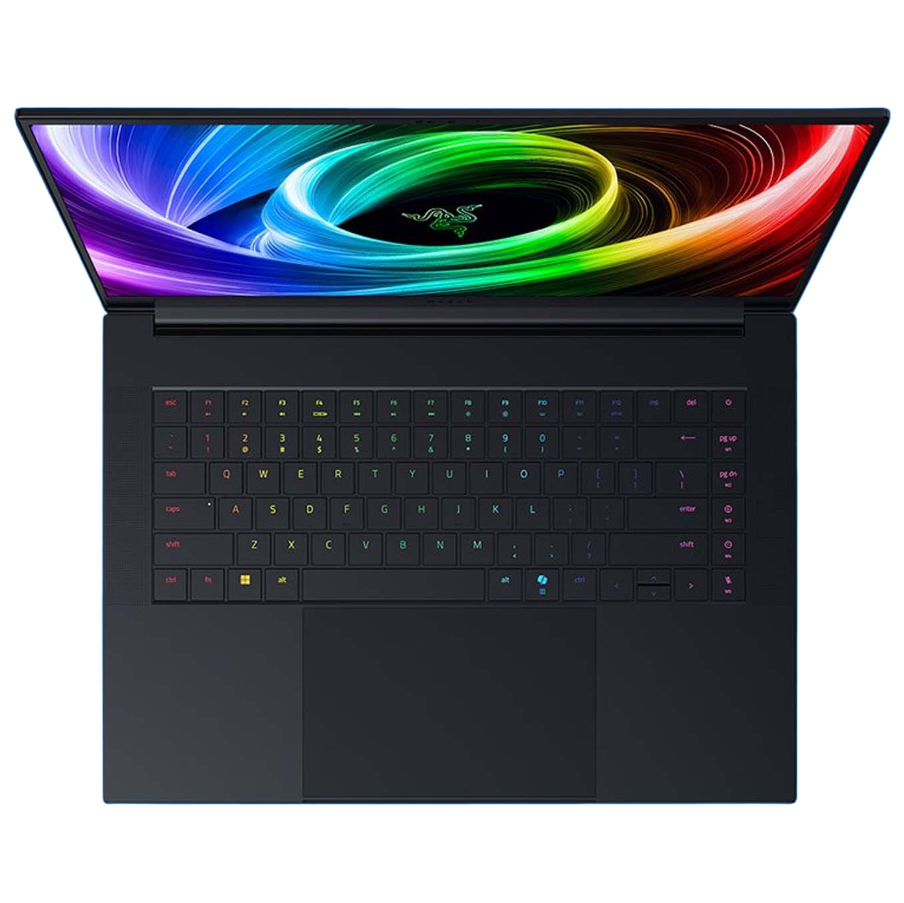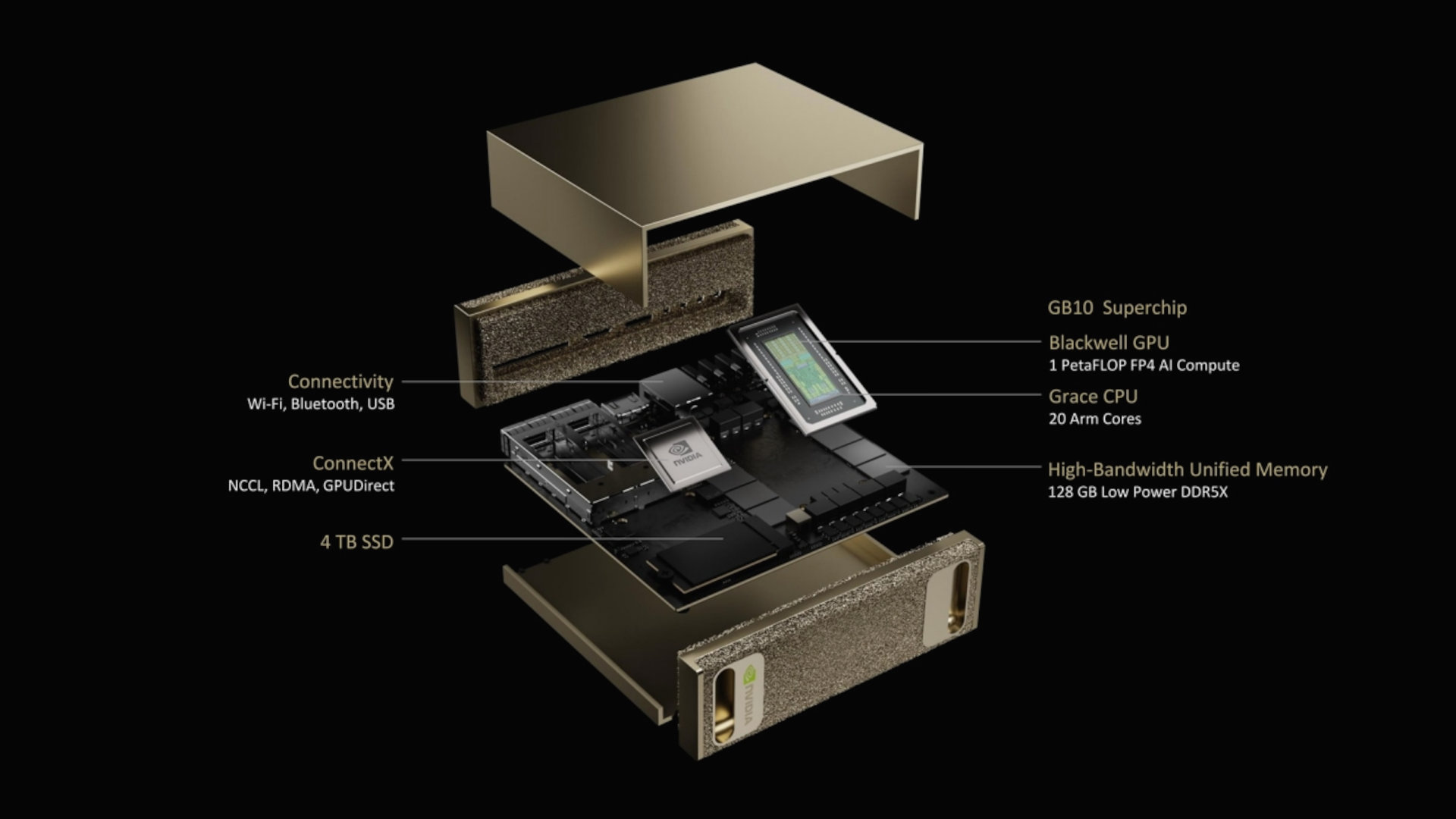'This is cool and everything, but don't do it.' Sage advice for anyone hoping to copy the success of one Redditor's attempt at using Nvidia's $4,000 DGX Spark AI box to play Cyberpunk 2077
Doom and Crysis are joined by a new game in a holy trinity of 'Will it run?'

Let's say you've just spent the better part of $4,000 on a highly specialised development machine that's designed for a single purpose: AI. Nothing about the device says it's for gaming. So it's only natural that you'd do exactly the same as one Redditor did, and try to get it to run Cyberpunk 2077.
Well, they did more than just try; they actually succeeded. In a post on Reddit, user Retrotom explains the steps they followed to get Nvidia's DGX Spark to natively run Cyberpunk 2077. The little 'AI-supercomputer-in-a-box' sports a GB10 APU, which has a 20-core Arm CPU and a Blackwell-based GPU with 6,144 shader cores.
Cyberpunk 2077 runs on DGX Spark from r/nvidia
The latter is, to all intents and purposes, the same GPU that's in a GeForce RTX 5070. Same number of shaders, TMUs, ROPs, ray tracing units, tensor cores, and L2 cache. Where they differ is in VRAM and power. While the GB10 sports 128 GB of LPDDR5x unified memory across a 256-bit wide memory bus for 273 GB/s of bandwidth, the GB205 in the RTX 5070 is home to 12 GB of GDDR7.
AI models need lots of RAM, which is why the DGX Spark is so heavily loaded compared to the graphics card, but as the RTX 5070 is for gaming, it uses much faster memory, with a peak memory bandwidth of 672 GB/s.
Nvidia's RTX 5070 has a standard power limit of 250 W, and while there are no given figures for the Spark, it comes with a 240 W power supply. That supplies power for everything inside the box: the CPU, the GPU, the mountain of RAM, and the 4 TB SSD. Clearly, the GB10's GPU isn't able to claim all 240 watts, so it'll be more power-limited than the 5070.
Hence why Retrotom's screenshot of Cyberpunk 2077 in action on the Spark only shows a performance of 44 fps, at 1080p on Medium settings. The Redditor does say that it averages around 50 fps, which doesn't sound too bad, until you realise that an RTX 5070 can hit 72 fps on average and when using the RT Ultra preset.
The GB10's GPU might be an RTX 5070 in disguise, but it's far more power-limited and bandwidth-restricted than the GeForce chip.
Keep up to date with the most important stories and the best deals, as picked by the PC Gamer team.
But even so, that's still pretty good for a device that is absolutely not designed or even expected to be running games. The DGX Spark's operating system is Linux, but since the CPU is Arm-based, Retrotom had to use Box64 (an x86-to-Arm emulator) in order to install Steam, load Cyberpunk 2077 and then run it.
The GB10's drivers don't offer support for DLSS because it's not something you'd ever use when developing AI apps, so the game couldn't employ it. I suspect it might be fine using FSR, though, as that's entirely shader-based and requires no specific GPU hardware to run, other than meeting a minimum shader model requirement.
Overall, it's a neat little experiment with a happy ending, though there is a cautionary tale to all of this. As Retrotom says, "This is cool and everything, but don't do it," because you'd be bonkers to spend this kind of money on a little AI box when it would get you an incredible gaming PC. Truth be told, though, if I had a $4,000 AI box, I'd be trying to run Cyberpunk 2077 on it, too. And Crysis and, of course, Doom.

1. Best gaming laptop: Razer Blade 16
2. Best gaming PC: HP Omen 35L
3. Best handheld gaming PC: Lenovo Legion Go S SteamOS ed.
4. Best mini PC: Minisforum AtomMan G7 PT
5. Best VR headset: Meta Quest 3

Nick, gaming, and computers all first met in the early 1980s. After leaving university, he became a physics and IT teacher and started writing about tech in the late 1990s. That resulted in him working with MadOnion to write the help files for 3DMark and PCMark. After a short stint working at Beyond3D.com, Nick joined Futuremark (MadOnion rebranded) full-time, as editor-in-chief for its PC gaming section, YouGamers. After the site shutdown, he became an engineering and computing lecturer for many years, but missed the writing bug. Cue four years at TechSpot.com covering everything and anything to do with tech and PCs. He freely admits to being far too obsessed with GPUs and open-world grindy RPGs, but who isn't these days?
You must confirm your public display name before commenting
Please logout and then login again, you will then be prompted to enter your display name.


